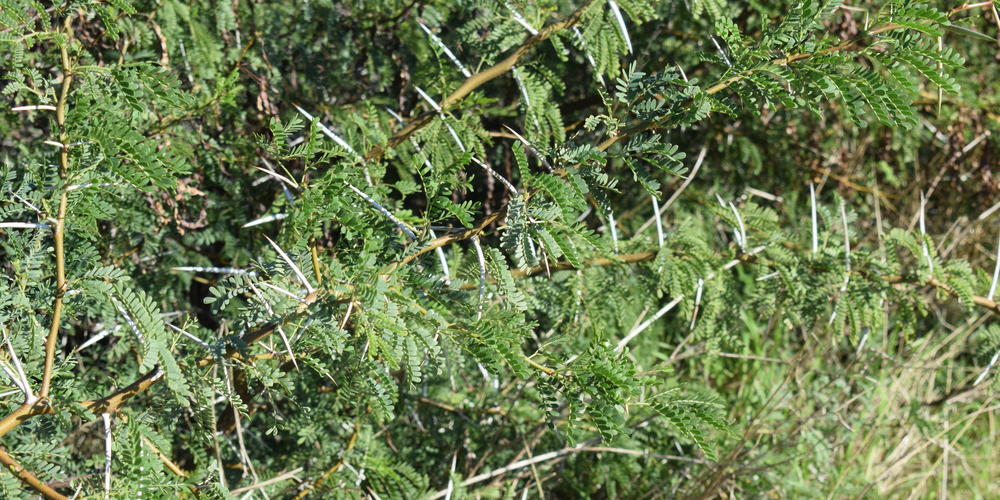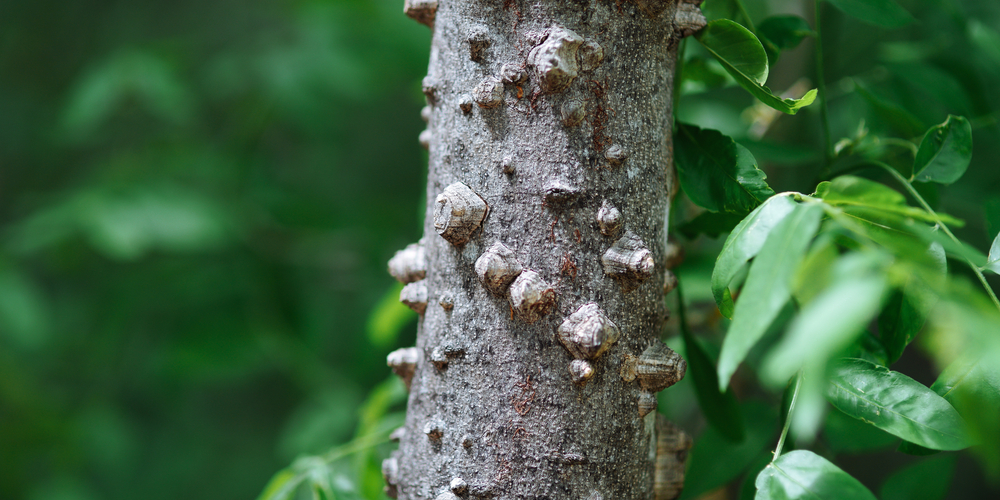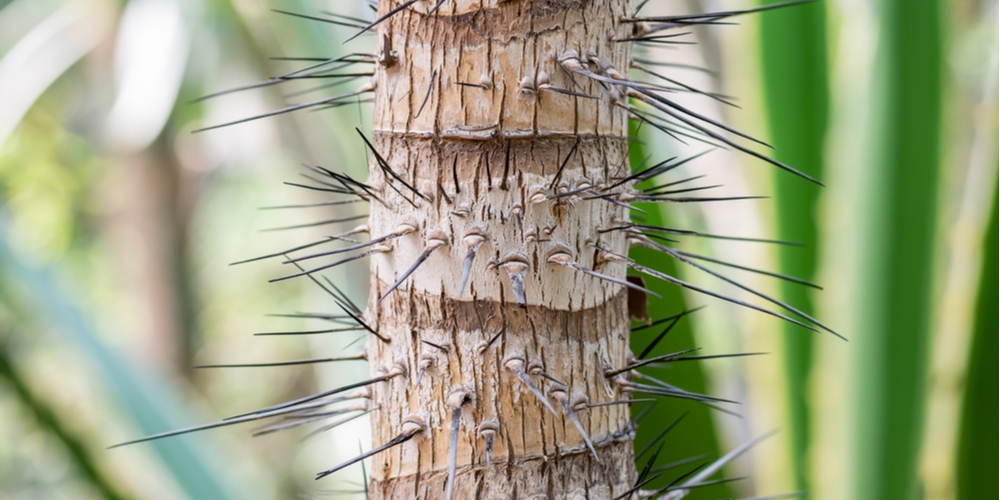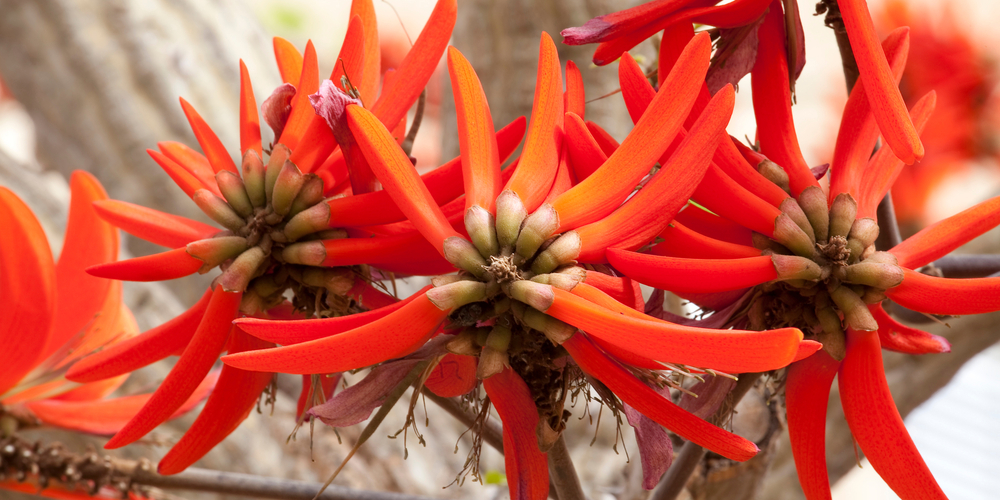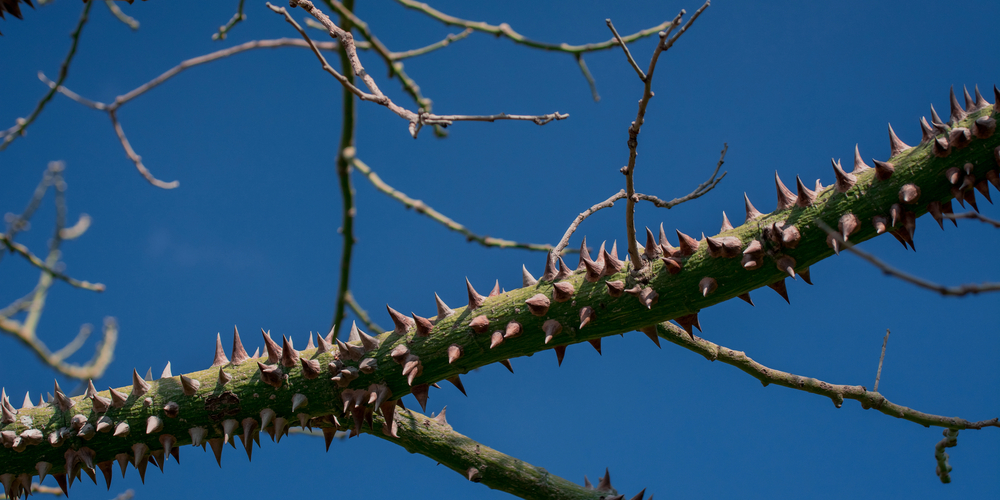Trees are widespread and popular in our homestead or the environment. We’ve got various species of trees with different properties, colors, parts, or features. We commonly have the tree with spikes on the trunk in different growth conditions. This article outlines six types of trees with spikes on their trunks.
Trees with spikes on trunk
These trees may have spikes, thorns, or spines of different parts of the trunk or branches, depending on the variety. Experts reveal that the spines on their barks serve as a defense mechanism against giant animals.
1. Silk Floss Trees
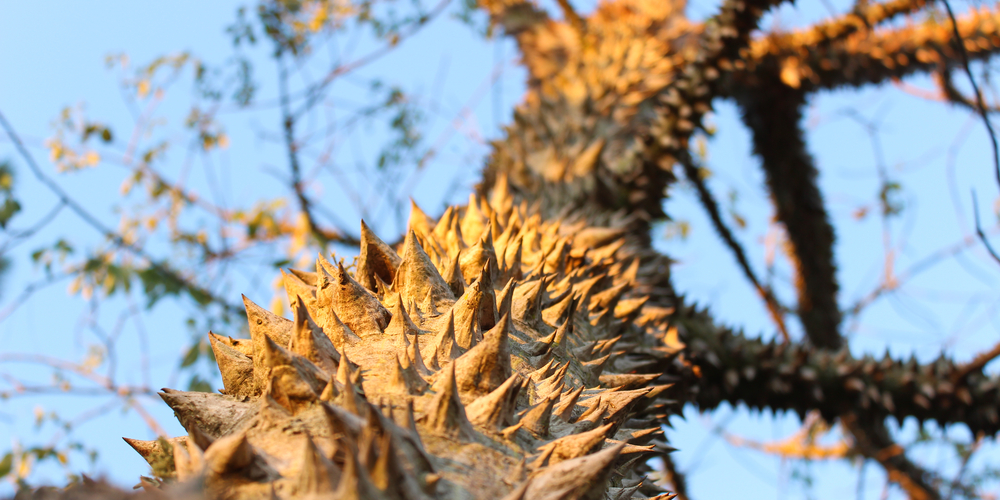
It’s a common tree species you can find in the tropical forests of Argentina, Brazil, Puerto Rico, and Paraguay. Experts commonly refer to it as the Chorisia speciosa.
The tree develops thick spines on the entire bulging trunk as it grows. Furthermore, the trees bear prickly horizontal branches, which later produce white and pink flowers.
The tree species has seed pods with cotton-like fibers, apart from the spined bark and prickly horizontal branches. The tree derives its name from these cotton-like fibers and spikes on its trunk.
2. Honeylocust
Honeylocust or the Gleditsia triacanthos is a common name when looking for trees with spikes on the trunks. It’s a delicious tree common in the lower midwest areas of the continental United States.
The tree species has a particular sweet-flavored pulp and bears various clusters of long spikes or thorns on its branches and trunk. The color of the spines on the tree’s trunks and branches may vary due to the tree’s age.
It changes the color of the spikes on the trunk from green to red, and later as they age, the color turns to gray.
3. Hercules’ Club
It’s a unique tree species bearing spikes on its trunk. This Zanthoxylum Clava-Hercules species grows in various parts of the United States, especially the Southern regions.
It comes with thick, short spines on the stem and has leathery leaves on the branches. The spikes on the trunk or branches act as a protective measure to keep animals and other predators away.
The tree is popular among most Native Americans for its medical benefits. Many individuals use the leaves from the tree to alleviate toothache. It helps relieve toothache as chewing the leaves enhances numbness in the mouth.
4. Guinea Bactris
The Aiphanes minima or Guinea Bactrics is one of the trees with spikes or spines on its bark you can find in various locations in the United States. This spiny palm tree grows well throughout Granada, Barbados, the Dominican, and the Caribbean in Puerto Pico.
The tree species has a thin trunk bearing a needle-like spine around it. Furthermore, some types have spikes underneath the leaves and branches of the tree for various purposes, such as protection.
Most individuals use the tree as a food source, as it comes with an edible, round, and red edible fruit or seed.
5. Coral Tree
It’s a popular tree in most areas of the native United States and India. The tree species has numerous spikes and thorns covering the whole trunk and branches.
With the tropical nature, the tree species grows appropriately outdoors or in areas in USDA zones 9 and above. You can grow trees on your lawn or exterior landscape, as it has some attractive and spectacular red flowers.
The tree provides unattractive appeal to your homestead if you grow it appropriately and provide the proper tree care.
6. Tropical Spiky Tree
The tropical spiky or sandbox are common trees that grow in various places across the United States, especially in areas with a hardiness of 10 and 11. This tree with thorns can grow up to 3 feet in diameter and 100 feet tall.
The spikes are essential to prevent animals from climbing or destroying the branches or leaves. There are numerous spikes covering the whole branches and trunk surfaces for the protection needs.
Despite the sharp spikes on its stem, the tree produces the best woody seed pods, which companies use to blot ink from pens.
Trees with spikes on trunk: Bottom Line
The different conditions and species cause trees to grow with different features. Commonly are the trees with spikes on the trunk or branches.
These trees have spikes or spines for protection or other essential purposes for the plants.
The above list presents the popular trees that grow with spikes on their trunks or branches.
Related Articles: Do Trees Grow From the Bottom or Top?
